Cold beers, crab sandwiches, glorious beaches and rugged headlands. Croyde Bay on the North Devon coast is well worth the trek to get there (a three-and-a-half-hour train journey from Paddington via Exeter to the nearest station at Barnstaple), if only to fall gratefully into the warm embrace of the village’s much-loved Thatch pub.
We first discovered Croyde 10 years ago, looking for an alternative to Cornwall for an extended family holiday by the sea. Since then, we’ve never been anywhere else. The first glimpse as you round the headland never disappoints; wide, white-tipped rollers gliding in across the sands, the dramatic outline of Baggy Point stretching out towards Lundy Island on the other side of the bay, as beautiful in autumn as it is in high summer. Apart from a few houses, scattered along the side of the headland, the beach is unspoilt, saved by the line of dunes, designated as a site of special scientific interest (SSSI).
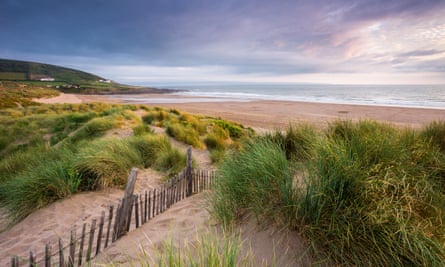
Croyde hit the headlines earlier this year, when it became part of the UK’s first world surfing reserve: 19 miles of wave-lashed shoreline, with beaches to suit everyone from novice bodyboarders to hardcore local surfers, who flock to the beach in the autumn months, when the water is still warm and the waves at their most reliable. It came as a surprise to those who hold up Cornish beaches, such as Newquay and Polzeath, as the epicentre of the UK surfing scene – but then Croyde has always been a little more under the radar.
Every year, when we return, I worry the village will have changed, that some loophole will let the developers in. But part of the joy of Croyde is that it somehow always remains the same; the cupboard-sized Ralph’s Surf Shop is still there on the corner, the Hub still does the best lemon crunch ice-cream and it’s always impossible to walk past Saltrock without coming out with at least two T-shirts and a hoodie.
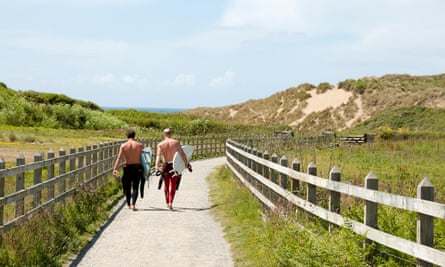
This year, our base for the week is the Old Cider Barn, two sumptuously converted barns with a raised garden area, tucked away off the road up to Georgeham. In the past, we’ve stayed in the residential roads nearer the beach, but there’s something lovely about being right in the heart of the village, and we soon grow used to walking along the high street in wetsuits and booties, before the 10-minute stroll through the fields and past the dunes to the beach.
The walk itself is lovely; entirely free of the sprawling holiday apartments and souvenir shops that flank so many of our coastal resorts. Instead, the path winds beneath trees just beginning to turn, a few houses visible through the burnt orange foliage, before the dunes rise up and the first glimpse of the sea appears between the sandy slopes. Even in the blustery conditions that characterise our first two days, the beach is stunning; waves roaring in, Lundy shimmering in the distance, gaggles of neoprene-clad surfers floating on the water like seals.
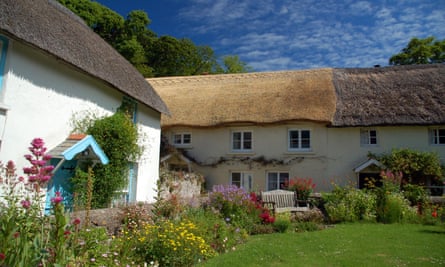
But there is more to a week in Croyde than simply being on the beach. When the wind drops and the skies clear, we walk around Baggy Point to the tip of the headland, where clusters of birds cling to the clifftops, planning their winter migration, and Hartland Point is just visible in the far south. It’s an easy two-mile loop, but there are plenty of longer options to Woolacombe or Saunton, with a regular bus service from Braunton for non-circular walks. One afternoon we walk out on to Morte Point with views towards Woolacombe beach (if you’re lucky you can sometimes spot Atlantic grey seals close to the shore), rewarding ourselves with Sri Lankan curry from the Barricane Beach Café.
On our final evening, we wrap up against the cool autumn breeze, pack a bag with cold beers and clamber up into the sand dunes to watch the sunset, the sky washed rose-pink, feathery trails of gold firing up as the sun sinks slowly below the horizon. The dunes are dotted with couples and young families, picnicking on hot chips and fresh pasties, devoured with fingers still salty from the sea.
Croyde may be the UK’s first surfing reserve, but it’s so much more than that; a beachy bolthole that’s as perfect for a romantic weekend as a family week of wave-lashed fun.
A week at the Old Cider Barn costs from £1,175, sleeping eight (holidaycottages.co.uk)
Three other blissful beaches nearby
Putsborough
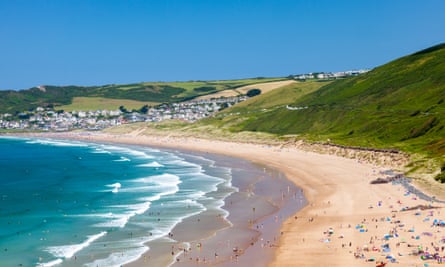
Getting to Putsborough is not for the faint-hearted; a narrow, single-track road from Croyde, with high hedgerows and few passing places. The reward is a glorious, entirely undeveloped stretch of sandy beach that rolls out to Woolacombe, with a buzzy beach café and lovely views out to Lundy. Parking is pricey, though (£12 a day in high season), so come equipped to spend the day.
Saunton Sands
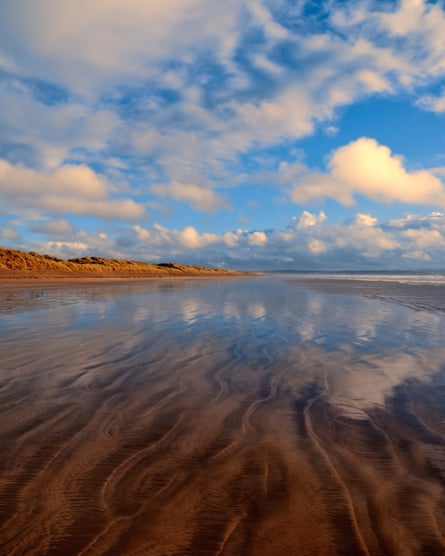
A vast swathe of sand stretching south from the headland that divides it from Croyde, Saunton is beloved by long-board and kite surfers, dog walkers and anyone who craves peace and space, even in the highest of high season. The beach shelves gently and has none of Croyde’s rips and undertows, making it ideal for young families. The Saunton Sands hotel, perched high above the beach, is a great place to stay (sauntonsands.co.uk).
Woolacombe
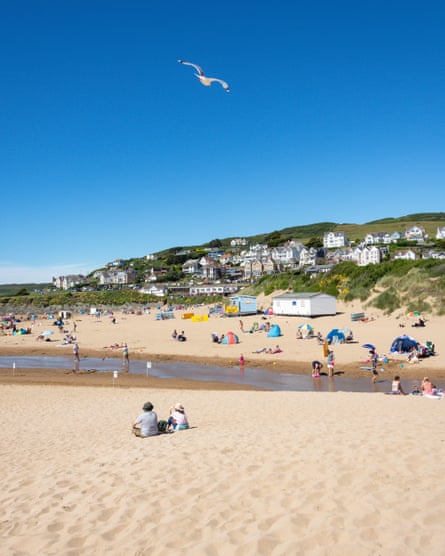
More of a classic resort town than its surf-focused neighbours, Woolacombe attracts far more visitors, but also offers a wider choice of activities and places to stay and eat. Every type of watersport is on offer – from kayaking and SUP to surfing and winging, with walking trails from the centre of town up on to the spectacular cliff-edged coast.












